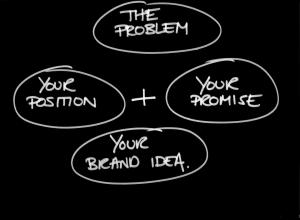- Driven by insights
- Obsessed with creativity and innovation
- Built on the foundation of a brand position
- Varying your message and method by stakeholder
- Focused on building long-term relationships
1. Driven by insights
The first step to transforming your communications is to understand everything there is to know about your key consumer. What is the demographic, mindset or other key traits that will help you understand your core consumer better?
And don’t assume that you can identify these key insights by just sitting in the office and sifting through point of sale data or old research. Get out on store walks.
Go to every store, in multiple regions that carries your category. Go in with an open mind and look at other categories besides your own. Are there new, unique or interesting display or POP ideas? How about packaging – what’s new and eye-catching? How are others using graphics, product photos, lifestyle photos or color coding systems?
Treat this assessment process formally. Take pictures, write-up your notes and share them as broadly as practical within the marketing, channel and brand teams. Look for their advice as well to broaden your search for insights.
Then ask yourself what are the major drivers you uncovered? How could you turn these into opportunities?
2. Obsessed with creativity and innovation
You can have innovation in branding, not just in new products. How can you be innovative with your brand strategy? Your communication tools? Your media strategy? Your packaging and merchandising?
Even your customer engagement strategy can be made richer with insights. How would your customer think of your company if you are sharing insights on:
- How their shopper and your core customer overlap
- How they shop
- Why they buy the category
Try this: approach the competition’s product line with the mindset of how might they position their brand and offering at this retailer? What would be their sales pitch to upset your placement? Dig deep into understanding their product offering. Is it innovative? Is it the best value? How does your core consumer view them relative to your brand?
3. Brand position is the consistent foundation
Everything you do should be built off of your brand position. Make sure you have it distilled down to the core essence. A brand position is NOT “we are the world leaders in…” And it certainly isn’t your tagline.
The brand position should be built from your insights – to get you from “what you do” to “why you do it.” This is the foundation of the emotional connection you will make with your core consumer.
From the brand position, you will be able to build out your:
- Brand promise
- Brand strategy
- Brand plan
- Tagline
4. Varying your message and method by stakeholder
How do you start the conversation? By recognizing that you need to develop specific content for specific groups. You will have one message for internal audiences. Another for consumers. Yet another for customers. Maybe even one for the communities you are located in.
The process is the same for each group of stakeholders:
- Understand them better
- Invite them to start or extend a relationship
- Speak relevantly and authentically to them
- Motivate them to consider buying our products and services
- Become an active part of their lives
5. Ongoing conversations build long-term relationships
Long-term relationships and ongoing conversations with stakeholders will intensify the brand experience. The goal is to develop a program that is based around creating a relationship between your brand and consumers.
- Listen to the conversations that are happening around your category
- Develop a story to link and connect with those conversations
- Reach out to key industry voices
- Develop a relationship with purchase influencers (bloggers and social media)
- Create a memorable and engaging persona for your brand
- Leverage these relationships to generate new positive content and awareness
- Tailor the message to the audience
The goal is to build lasting, relevant relationships with your consumers.
Define your brand and slam the door on the competition
Products become commodities without brand building. What’s more, consumers are willing to pay more for brands they love. But the real bottom line is this: competitors will define your brand if you don’t define it yourself.
This process will help you slam the door to the competition.



TPG Social Media